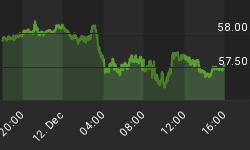Take 40 trillion Yen, add another 22 trillion, and you still aren't doing enough!
So how much quantitative easing is enough quantitative easing?
Japan tipped into depression almost 20 years before everyone else, but it got no respect for blazing the trail. Its zero-rate policy also got started more than seven years before the US or Britain's. But again it was all "too little, too late" according to Western observers.
Even massive deficit spending and creating money from nowhere failed to beat Japan's "self-induced paralysis" said ![]() Ben Bernanke, then a Princeton professor but now chairman of the US Federal Reserve, of course - and accused himself of
Ben Bernanke, then a Princeton professor but now chairman of the US Federal Reserve, of course - and accused himself of ![]() failing to print enough electronic money to rescue America from the horror of non-inflating consumer prices.
failing to print enough electronic money to rescue America from the horror of non-inflating consumer prices.
Little wonder the Bank of Japan wants to get ahead of its critics. Especially those foreign academics (now central bankers) who built their career claiming they would make sure "deflation doesn't happen here" in their own domestic economies. Yet Japan's ambitions remain so very modest. Why won't the Bank of Japan man up and decimate the currency?
Never mind that Japanese gold prices have risen four-fold since QE began in 2001. Never mind that the Bank of Japan today called its policy "powerful monetary easing". Because inflation in Japanese consumer prices is still running around 0% as the Bank noted on Tuesday. So for a Valentine's treat, its ![]() nine policy-makers voted to create more than half as much QE as they have undertaken in total so far - a further ¥22 trillion ($281bn) by year-end - taking the total decade-long program to $832bn in money it simply willed into being.
nine policy-makers voted to create more than half as much QE as they have undertaken in total so far - a further ¥22 trillion ($281bn) by year-end - taking the total decade-long program to $832bn in money it simply willed into being.
The aim of all this money? The Bank of Japan says that "price stability in the medium to long term" means a rate of consumer inflation between 0% and 2% per year. Today's vast new quantitative easing "more specifically sets a goal at 1% for the time being."
How could creating so much money - somewhere between the annual GDPs of Turkey and the Netherlands - result in such little inflation?
"Lawmakers renewed criticism of the BOJ after the announcement," reports Bloomberg, "with Kozo Yamamoto, of the Liberal Democratic Party, saying the 1 percent target was 'too low' and not a substantial change from existing policy. Takeshi Miyazaki, a ruling Democratic Party of Japan lawmaker, said the central bank's approach seemed half-hearted...
"A group of DPJ lawmakers is seeking a 2 percent to 3 percent inflation target."
But note where Japan's policy wonks are starting from. Buying government bonds with their quantitative easing, the Bank of Japan currently owns just 6% of national debt outstanding. Okay, that should rise above 9% in the next year, and its very nearly equal to the net debt due to be issued in the next 12 months, too. But 3 times as much existing debt will also have to be rolled over by March 2013, and as a proportion of Japan's broad M3 money supply, QE currently equals less than 4% of the total. It's a bonsai tree in the forest, in short.
Compare and contrast the Bank of England. It got started in only March 2009, but its latest QE plans will take quantitative easing to more than £1 in every £4 of the UK's record-high national debt. As for the broad M3 money supply, the Bank will have created and spent a sum equal to 14% of the all the cash and savings in the UK economy.
Now, that's real quantitative easing! It makes Japan's QE look paralyzed indeed, not least with the UK enjoying annual price inflation of 3.5% per year since the Bank of England first slapped the ink on its electronic printing press. Japan's tepid QE has instead delivered an average 0.15% annual fall in the cost of living since 2001.
So what did QE achieve in Japan? "The program aided weaker Japanese banks and generally encouraged greater risk-tolerance in the Japanese financial system," concluded a Federal Reserve study in 2006...just before the West caught up with Japan and embarked on its own credit-bust and depression.
"Quantitative easing may have [therefore] had the undesired impact of delaying structural reform," said the Fed - a structural reform that zero-rate money printing in the UK and US hasn't yet allowed either. Our zombie banks continue to avoid collapse, thanks to the huge volume of money thrown at their balance-sheets. Keeping them on life support, as the Japanese experience shows, will mean extending and expanding QE indefinitely.
How inflation in the cost of living responds over the next decade remains to be seen.
















